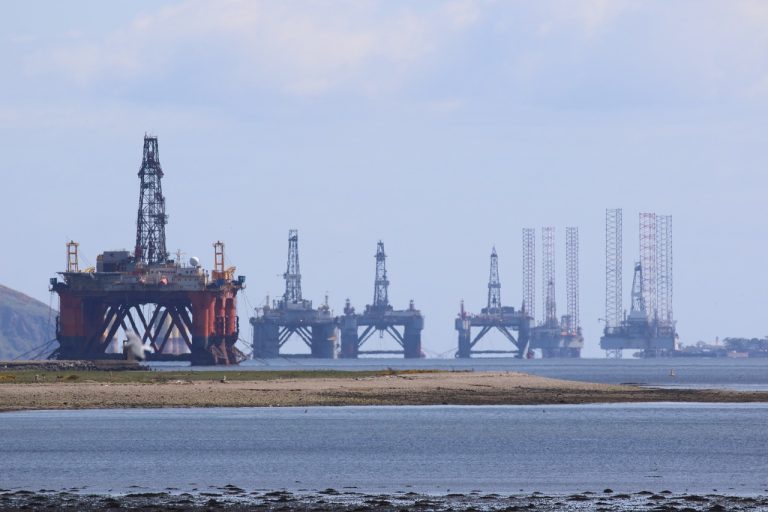Key Takeaways
- November natural gas futures (NGX25) experienced a slight decline, closing down 0.69% on Wednesday.
- Warmer U.S. weather forecasts for early November are expected to reduce heating demand, pressuring prices.
- Anticipated higher-than-seasonal natural gas storage builds also contributed to the downward pressure.
- U.S. dry gas production remains high and near record levels, acting as a bearish factor.
- Increased electricity output provides some support for natural gas prices.
November Nymex natural gas futures, trading under the ticker NGX25, settled lower on Wednesday, experiencing a decrease of 0.024, or 0.69%. This followed a period where prices had reached a three-week high for the nearest-expiring futures contract.
Market Influences and Forecasts
Wednesday’s trading saw natural gas prices retreat from recent gains, primarily influenced by updated U.S. weather forecasts. Forecaster Atmospheric G2 indicated a shift towards warmer temperatures across the U.S. for the period of November 1st to 5th. This expected warming trend is projected to curb the demand for natural gas used in heating, prompting a liquidation of long positions among traders.
💡 Beyond immediate weather shifts, the outlook for natural gas storage levels is also a significant factor. Expectations point towards a higher-than-seasonal increase in inventories. The consensus forecast anticipates Thursday’s weekly U.S. Energy Information Administration (EIA) natural gas storage report will show an increase of approximately 83 billion cubic feet (bcf) for the week ending October 17th. This figure is notably above the five-year average of 77 bcf for the same period, signaling potentially ample supplies.
Production, Demand, and Storage Dynamics
U.S. (lower-48) dry gas production figures on Wednesday stood at 107.1 bcf/day, representing a year-over-year increase of 3.9%, according to BNEF. Concurrently, lower-48 state gas demand was reported at 73.8 bcf/day, up 4.6% year-over-year, also from BNEF. Estimated LNG net flows to U.S. LNG export terminals remained stable, at 16.4 bcf/day, a modest increase of 0.2% week-over-week. Additionally, a recent EIA report highlighted that U.S. natural gas pipeline exports to Mexico reached a record high of 7.5 bcf/day in May.
⚡ The sustained high level of U.S. natural gas production is recognized as a bearish indicator for prices. The EIA’s outlook supports this, as they revised their forecast for 2025 U.S. natural gas production upward by 0.5% to 107.14 bcf/day on October 7th. Current production levels are nearing historic highs, further supported by a recent two-year peak in active U.S. natural gas drilling rigs.
Supportive Factors and Inventory Levels
Despite bearish production and weather outlooks, certain factors provide support for natural gas prices. The Edison Electric Institute reported on Wednesday that U.S. (lower-48) electricity output saw a year-over-year increase of 4.0% in the week ending October 18th, reaching 73,756 GWh. Over a 52-week period ending on the same date, U.S. electricity output rose by 2.89% year-over-year, totaling 4,280,821 GWh. This heightened electricity demand can translate to increased natural gas consumption for power generation.
📍 The previous week’s EIA report, released last Thursday, offered a supportive signal. Inventories for the week ending October 10th increased by 80 bcf, which was below the market consensus of 81 bcf and also below the five-year average of 83 bcf. As of October 10th, U.S. natural gas inventories were up 0.4% year-over-year and stood 4.3% above their five-year seasonal average, indicating generally adequate supply levels. In contrast, European gas storage was reported at 83% full as of October 19th, lagging behind the five-year seasonal average of 92% for this time of year.
Rig Count Trends
Baker Hughes data from last Friday revealed an increase in active U.S. natural gas drilling rigs. For the week ending October 17th, the number of active rigs rose by one to 121, remaining just below a two-year high of 124 rigs recorded on August 1st. Over the past year, the gas rig count has shown an upward trend, recovering from a 4.5-year low of 94 rigs reported in September 2024.
Final Thoughts
The natural gas market remains sensitive to shifting weather patterns and inventory data, alongside persistent production levels. While warmer forecasts and anticipated storage builds exerted downward pressure, rising electricity demand offers a counterbalancing supportive factor. The trend in drilling rig activity also continues to be a key indicator for future supply expectations.

